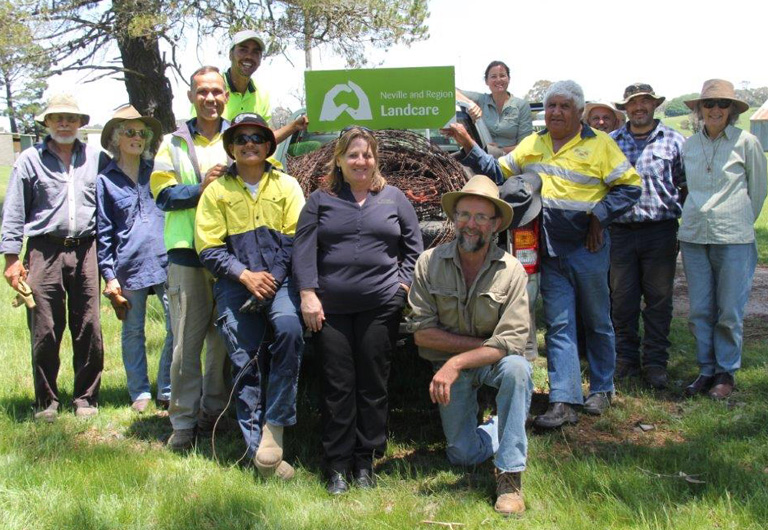Finding a squirrel glider entangled in their barb wire fence is often the very first time people find out that they have gliders living on their land.
The distressing discovery of ensnared wildlife is inspiring farmers and others to get involved in Barb Busters. A community-led project which assists landholders to modify or replace sections of barb wire fencing on their properties.
GER regional partnership, Kanangra-Boyd to Wyangala (K2W), is working to roll out the wildlife-friendly fencing project in the Abercrombie Catchment through funding from the NSW Government’s Saving Our Species program.
“The chance is that some gliders may recover from their injuries, but most don’t. People genuinely don’t realise how harmful barb wire fencing is for wildlife and when they do, they are often keen to do what they can to help,” said Mary Bonet, a local farmer and GER regional lead of K2W.
Over 60 types of birds and mammals have been recorded entangled in barb wire fences across Australia, including squirrel gliders, powerful owls and koalas. Sadly, many obtain permanent injuries as they struggle to free themselves or face a slow death.
“The use of barb wire fences has become standard practice across Australia, but there are good alternatives available now such as multi-strand high tensile plain wire,” Mary said.
“Improving grazing management practices, such as introducing rotational grazing so that cows are less likely to push through the fence to get to better feed, also makes a significant difference. This is one of the solutions that we employ on our own farm.”
Mary acknowledges that trying to remove all barb wire fencing is impractical, so the focus is on modifying or removing barbs only in the places where it is essential to do so.
“We help landholders to identify the key areas of their land where wildlife are likely to be trying to cross between patches of habitat, and the barb wire poses a significant barrier. For example, along creek lines, between paddock trees or in areas of high movement which are entanglement hotspots.”

“Often, we modify rather than remove the barb wire in those sections. There are a number of ways to do this, such as threading PVC piping over the fence or placing metal tags at intervals along it which helps to make it more visible. This assists gliders and other nocturnal animals to navigate the barbs in the dark.”
“When we work in the areas that really need it, anything we do is going to be of benefit. And as surrounding neighbours also modify or remove the barb wire on their properties, those contributions start to add up to provide significant benefits for local wildlife,” Mary said.
Landholders in the Abercrombie Catchment who would like to get involved in Barb Busters are invited to contact Mary at Kanangra-Boyd to Wyangala by emailing mary@k2wglideways.org.au
Click here for additional information on how to make your fencing more wildlife-friendly and what to look out for.
What to do if you find wildlife caught on your barb wire fence:
If you do find an animal entangled in your fence, act quickly, and use a pair of gloves and a small pair of scissors or pliers to gently ease it off the barbs. You may need to cut off a section of barb wire before disentangling the animal so that it doesn’t incur further injuries. Wrap the animal in a towel or cloth to carefully hold it still and place it in a box with a breathable cover. Leave the box in a quiet, cool place and contact WIRES on 1300 094 737 or your local vet immediately.




 Article
Article